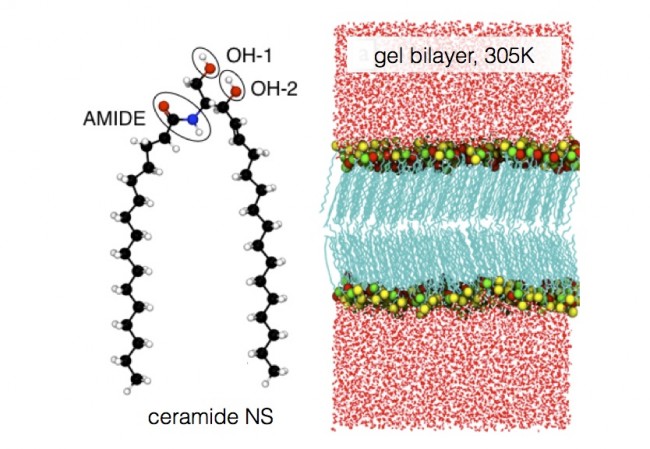McCabe Group: Lipid Membrane Simulation
Lipid Membrane Simulation
The barrier function of the skin is localized to the stratum corneum (SC) layer, composed of corneocytes (dead skin cells) surrounded by a lipid matrix rich in ceramides, cholesterol, and free fatty acids. The McCabe group uses molecular simulation to investigate the ceramide-based bilayers, to investigate the structure and morphology of bilayers to understand the structure-property relationships responsible for barrier function.
This work involves the use of fully atomistic models as well as the creation of novel methods for the development of coarse-grained models. In conjunction with the Cummings group, advanced free energy methods (e.g., the Wang-Landau and statistical temperature molecular dynamics methods) are also employed to investigate the phase transitions in coarse-grained phenomenological lipid models.
Selected Related Publications:
- Guo S, Moore TC, Iacovella CR, Strickland LA, McCabe C, (2013)Simulation Study of the Structure and Phase Behavior of Ceramide Bilayers and the Role of Lipid Head Group Chemistry, Journal of Chemical Theory and Computation, 9 (11), pp 5116–5126
–DOI:10.1021/ct400431e
- Gai L, Vogel T, Maerzke K, Iacovella CR, Landau D, Cummings PT, McCabe C, (2013) Examining the phase transition behavior of amphiphilic lipids in solution using statistical temperature molecular dynamics and replica-exchange Wang-Landau methods, The Journal of Chemical Physics,139, 054505
–DOI:10.1063/1.4816520


Connect with Vanderbilt
©2025 Vanderbilt University ·
Site Development: University Web Communications